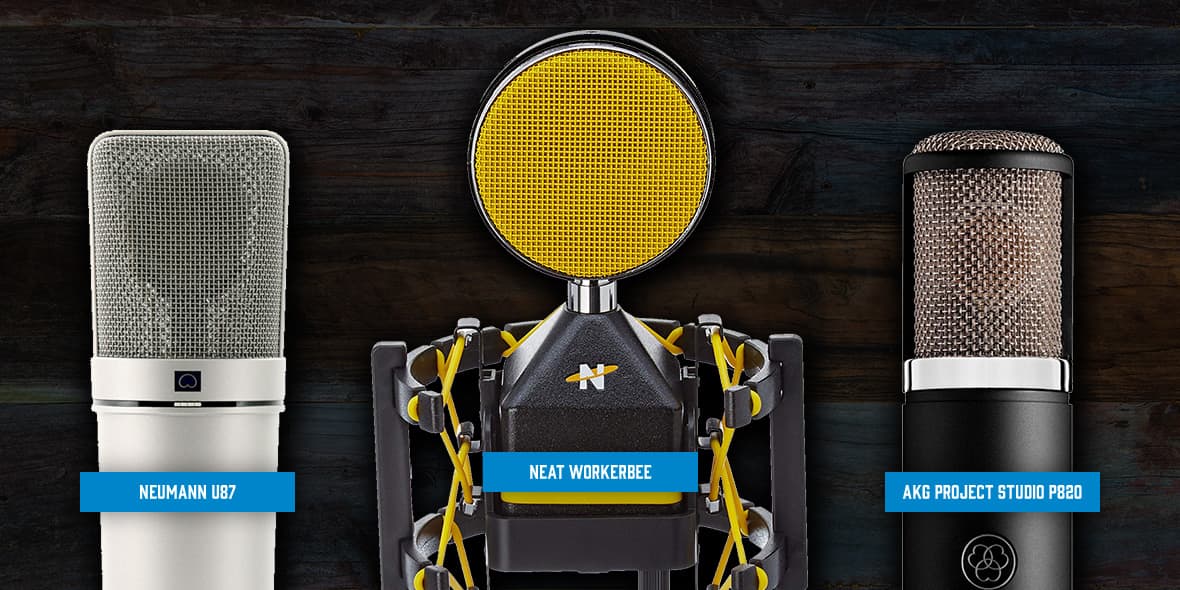What will I learn?
- What a tube mic is
- The solid-state equivalents
- Benefits of using a tube-powered condenser mic
For the past 50 years, the music industry has been dominated by solid state microphones. But purists remain convinced that tube-powered mics are the only way to get the best sound.
A tube microphone, or valve mic as they’re sometimes known, is old condenser technology. Well over 100 years old. Yet they’re still used today and have even grown in popularity. They work using a tube circuit (exactly like old landline phones or a tube guitar amp) inside the casing to amplify a signal carried into a speaker or audio interface.
Before integrated circuits became commonplace, the likes of the Beatles, Rolling Stones and Jimi Hendrix had no option but to use tube mics. They gave them a distinct vintage, saturated tone on recordings that many have tried to recapture.
Generally, they’re not the cheapest option. All the hand-made components and wiring need to be assembled precisely so it’s reliable. We’re going to explore whether these old timers are still worth the money, or if they’ve had their day.
It’s important to note that not all condenser microphones contain tubes, but the vast majority of tube mics are condensers (with a few ribbon mic exceptions).
For this comparison, we’ll just focus on condenser mics. In a non-tube powered design, solid state technology consisting of diodes, transistors and integrated circuits prepare the signal for an external power supply, or phantom power, to send an electric charge.
Solid state circuitry is relatively sturdy. They are much less likely to break than their fragile tube counterparts. They also won’t overheat and need replacing. Generally, it’s uncommon to use a condenser for live performances when a dynamic mic is on hand but if you persist, steer well clear of tubes and opt for the beefier solid state.
The biggest drawback for tube is the price. If you were serious about buying one you wouldn’t mind the maintenance. But check out the sE Electronics Rupert Neve Designs RNT or the iconic Manley Reference to get an idea of what you might pay. And they get more expensive, with the likes of Telefunken and Blue mics climbing into the thousands.
Even the most universally-used famous microphones are solid state. The first that springs to mind is the Neumann U87, a large diaphragm condenser that’s made its way onto hundreds of modern-day vocals tracks. The AKG C414 meanwhile is iconic for its use on the BBC. And it’ll cost a fraction of what you could pay for tube condensers. There are loads of affordable options in the solid state market such as the AKG P420 or Neat Worker Bee clocking in at just over £100.
It doesn’t look great for tubes at the moment. But there are strong reasons to invest in one as a professional recording musician or someone looking to break onto the scene with top sound quality.

They excel in a studio environment above all else. When you have time to set up thoroughly, not much comes close to the exquisite sound captured by a tube microphone. Although every mic has a slightly different voicing, tubes are generally characterised by their warmth, natural compression and added harmonics. Vocal tracks sound brilliant through them because of the nuances they’re able to pick up. The speed at which they capture the sound highlights fine details in a performance.
Luckily, as highlighted in the video, because this old circuitry is growing in popularity again, there are more options than ever before. You can buy them well under £1000 and they’re great value. The brilliant Rode K2 and Rode NTK mics have gained admirers for their richness, huge dynamic range and high sound pressure headroom.
Most valve microphones also have the option of multiple polar patterns. This means the microphone can capture sound in the likes of cardioid, super cardioid and figure eight modes. It’s great for varying the presence or ambience of a recording.
There is no right or wrong answer to microphones. It’s all about experimentation. Tube power absolutely has its place in providing more tonal variety to music. However, there are some guidelines you can follow using tried and tested methods.
The best advice is to pick the microphone based on its characteristics. Not over whether it has a tube powering it. Some solid states will sound warmer or glassier and the same with tube mics. Keep an open mind when trying them out. Listen to results, not buzzwords!
If you’d like to read our previous learn article, click here!
Responses & Questions